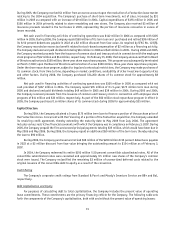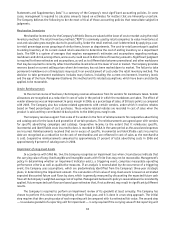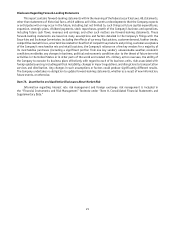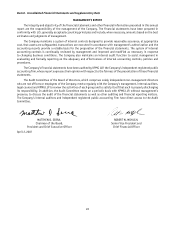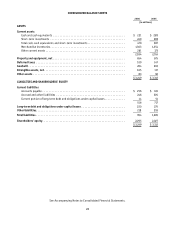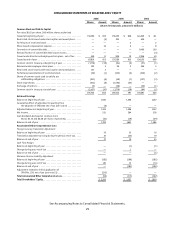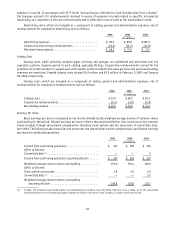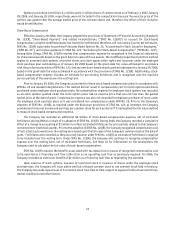Foot Locker 2006 Annual Report Download - page 39
Download and view the complete annual report
Please find page 39 of the 2006 Foot Locker annual report below. You can navigate through the pages in the report by either clicking on the pages listed below, or by using the keyword search tool below to find specific information within the annual report.
23
MANAGEMENT’S REPORT ON INTERNAL CONTROL OVER FINANCIAL REPORTING
The management of the Company is responsible for establishing and maintaining adequate internal control
over financial reporting as defined in Rules 13a-15(f) and 15d-15(f) under the Securities Exchange Act of 1934.
The Company’s internal control over financial reporting is designed to provide reasonable assurance regarding the
reliability of financial reporting and the preparation of financial statements for external purposes in accordance
with U.S. generally accepted accounting principles. The Company’s internal control over financial reporting includes
those policies and procedures that: (i) pertain to the maintenance of records that, in reasonable detail, accurately and
fairly reflect the transactions and dispositions of the assets of the Company; (ii) provide reasonable assurance that
transactions are recorded as necessary to permit preparation of financial statements in accordance with U.S. generally
accepted accounting principles, and that receipts and expenditures of the Company are being made only in accordance
with authorizations of management and directors of the Company; and (iii) provide reasonable assurance regarding
prevention or timely detection of unauthorized acquisition, use or disposition of the Company’s assets that could have
a material effect on the financial statements.
Because of its inherent limitations, internal control over financial reporting may not prevent or detect
misstatements. Also, projections of any evaluation of effectiveness to future periods are subject to the risk that
controls may become inadequate because of changes in conditions, or that the degree of compliance with the policies
or procedures may deteriorate. Management assessed the effectiveness of the Company’s internal control over financial
reporting as of February 3, 2007. In making this assessment, management used the criteria set forth by the Committee
of Sponsoring Organizations of the Treadway Commission (COSO) in Internal Control-Integrated Framework. Based on
our assessment and those criteria, management believes that the Company maintained effective internal control over
financial reporting as of February 3, 2007.
The Company’s independent registered public accounting firm has issued their attestation report on management’s
assessment of the Company’s internal control over financial reporting. That report appears in this Annual Report on
Form 10-K under the heading, Report of Independent Registered Public Accounting Firm on Internal Control Over Financial
Reporting.
MATTHEW D. SERRA,
Chairman of the Board,
President and Chief Executive Officer
ROBERT W. MCHUGH,
Senior Vice President and
Chief Financial Officer
April 2, 2007




